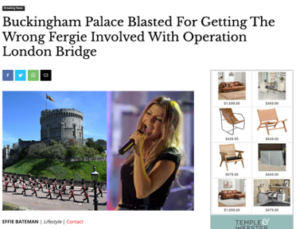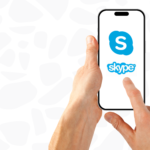Misinformation isn’t a new phenomenon. With the rise of the internet has come the rise of opportunity for misinformation to spread. It’s a fake news pandemic. Where does PR fit in?
The COVID-19 pandemic in particular saw a massive spike in misinformation online.
Over the past four years, online misinformation or fake news, has become its own, just as insidious, pandemic.
In the wake of fake news accompanying the pandemic, political party turnovers and turmoil, and the Ukraine-Russian war, it is unsurprising that in March 2022, 89% of Australians reported feeling worried about the spread of fake news online.
Oxford University Press’ recent report, The Matter of Fact, outlined similar confusion globally. Nearly 3/4 of those surveyed agreed that the pandemic has made them more cautious about the accuracy of the information they encounter, and 69% said that it has become harder to clarify if something is true.
It’s also become common for organisations and institutions to interact with, comment on, and utilise current events within their marketing and public relations (PR) communications.
However, in an age where misinformation is rife and trust is hard-earned, how does PR cut through the noise and make itself heard? And how can PR professionals play their part in combating fake news?
How do people feel about PR and businesses in 2022?
As of 2021, 29% of people have reported foregoing the news altogether to avoid misinformation. But the fake news pandemic isn’t just impacting the news industry.
The 2022 Edelman Trust Barometer Global Report shows that trust in institutions such as Government, Business, and NGOs, along with Media, is falling steadily. In fact, 76% of people globally fear that fake news will be used as a weapon by the Government and Media in particular.
Often, fake news comes from unreputable sources and via mediums such as social media. However, on occasion, the fake news pandemic can be increased by those within the media and public relations sphere.
Ways this can happen are varied, but include:
- Clickbait headlines, which are often misleading or overdramatised to encourage more clicks and engagement. This is the online legacy of stunt marketing and publicity stunts.
- Satire or parody news sites and stories, such as those shared by the Onion or the Betoota Advocate. While these aim to satirise news sites, their headlines are often misconstrued by publics as factual.

Source: The Betoota Advocate 2022
- “Sloppy” or unreliable journalism, often occurring when there is pressure to release news faster than competitors. This itself is an impact of the saturation of media and news posted online.
- Finally, the most damaging form of news of all is that which is intentionally deceptive. Think Donald Trump and his administration’s management of COVID-19, during which he spread fake news including unverified COVID-19 treatments on the US’ largest TV stations.

In result, people are wary not just of media sites, but of institutions and organisations themselves. Particularly if the fake news creates trends which are then engaged with by the institutions.
How can PR help stop the spread of fake news?
While a key solution to the fake news pandemic is overall media literacy in communities, PR professionals play an integral role too.
For one, we must ensure that our contribution to the online noise is reputable and does not support the spread of fake news.
We must encourage transparency and clear dialogues with institutions, media, and the public.
As outlined by Senior News & PR Manager at Oxford University Press, Grace Carruthers, it is also the role of PR professionals to be both proactive and reactive interchangeably, as fake news panic also fuels cancel culture, and we watch demonstrations of brand and organisational values rapidly turn into a case study for being performative, and called out virally online.
Instead of jumping on the bandwagon, organisations and their PR teams must acknowledge biases. As PR professionals, we must encourage our clients to be authentic in all communications, even when at times it can be uncomfortable or “untrendy”.
Good business is not always conducive to going viral, but it is the key to longevity and trust from clients and the wider public and our safety within online spaces.







